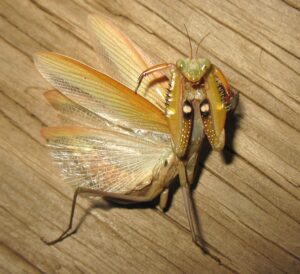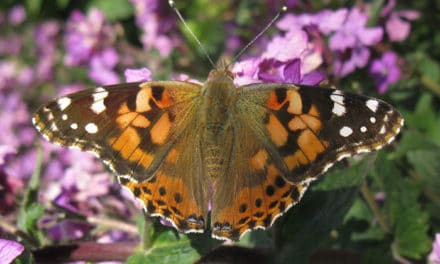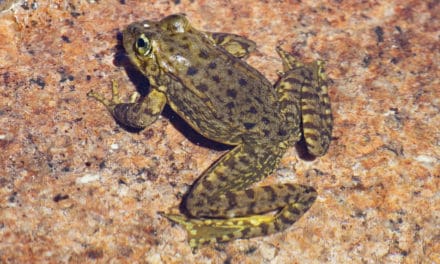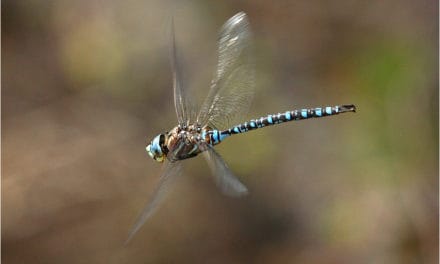 Article and Photos By Jim Moore, Insect Naturalist –
Article and Photos By Jim Moore, Insect Naturalist –
A few years back a friend dropped by and gave me this brown Praying Mantis, that she had found in Westwood. For me it was the first local observation of a praying mantis found within the Mountain Meadows Basin. I wondered if it was a native species, or one of those mantid species introduced to control bugs in peoples home gardens. With just a little online research at the Bug Guide website, I soon found out that it was called the ‘European Mantis’ (species Mantis religiosa). The species epithet ‘religiosa’ refers to the ‘religious’ or prayer like raising of of it’s raptorial forelegs while waiting for prey to come near to this mantid. They can occur in brown, green, and straw yellow color variants, with each individual mantid often choosing a matching colored habitat. However, mantids will often venture out onto brightly colored flowers where pollenating insects are frequent visitors, such as with the green variant, which I photographed in a friends flower garden.
The European Mantis was, supposedly, accidentally introduced over one hundred years ago from Europe into Eastern North America. Its benefit as a pest control agent was soon realized, and propagation of this mantid species was begun. Home gardeners can now buy mantid egg cases online or at garden nurseries; resulting in the furthering of the range of this species across North America; and no doubt also throughout the NorCal region.
When I lowered the camera down near to this mantis, for a close up photograph, to my surprised it immediately reared itself up into it’s natural defensive stance. This is what is called a ‘deimatic display’ used to frighten or startle a would be predator; a common defensive response among many other insect species. The fake eye-spots on this mantid’s raptorial forelegs are an added defense for the European Mantis.
These mantids will move their very mo bile heads from side to side scanning the view for potential prey. Their extremely keen eyesight, and the lightning fast striking ability of the ‘praying’ mantid’s raptorial forelegs, enable a stationary ‘preying’ mantis to snatch a speeding flying insect right out of the air, should the unfortunate bug come too close. Also, a mantis may move closer to a walking insect in order to catch the prey. Mantids hunt and feed only during the daytime.
The food prey of the European Mantis includes any living moving animal smaller than itself, including: caterpillars and cutworms, moths and butterflies, grasshoppers and crickets, ladybugs and lacewings, mayflies and mosquitos, bees and many other pollinators, and other mantids, even of its own species!
Whether beneficial or invasive pest, they are all just food for the one of the most ferocious and successful hunters in the insect world.











